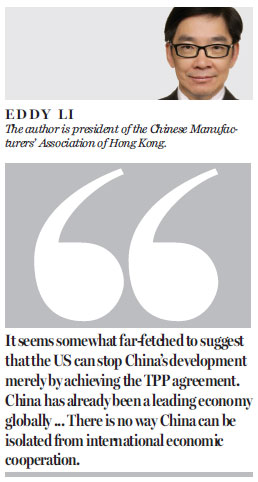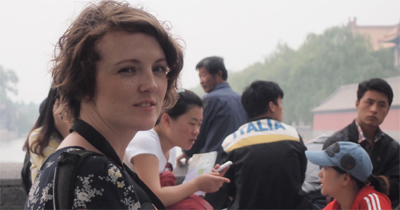On Oct 5, the Trans-Pacific Partnership (TPP) agreement was finally signed, hailing the creation of a new free trade area incorporating 12 countries. They are the United States, Canada, Japan, Australia, New Zealand, Singapore, Malaysia, Vietnam, Brunei, Chile, Peru and Mexico. The pact, achieved after seven years of tough negotiations was, according to US President Barack Obama, to ensure "countries like China do not write the rules for the global economy".
As a significant component of the US' pivot to Asia strategy, the TPP pact seeks to create one of the largest free economic areas in the world, accounting for 40 percent of the global economy. Apart from the inclusion of lower or zero tariffs, it also includes rules regarding trade in invisibles, intellectual property, environmental protection, labor standards, competitive neutrality, and more. It is regarded as the multilateral free trade agreement (FTA) with the highest levels of freedom in the Asia Pacific area. The maneuvers behind the TPP have sparked concern that the US is trying to restrict China not only militarily, but also economically.
I have a different attitude toward the TPP. It seems somewhat far-fetched to suggest that the US can stop China's development merely by achieving the TPP agreement. China has already been a leading economy globally. In international trade, the country is the largest exporter as well as the second largest importer. China has the world's biggest population. There is no way China can be isolated from international economic cooperation.
The TPP will probably have some negative effects on China's foreign trade in the short term. Many products from Vietnam or Malaysia bound for the US or Japan will enjoy zero tariff status. The TPP's rules of origin provisions are rigorously designed to ensure only goods that originate in the TPP region receive preferential treatment. This will inevitably impact negatively on China's raw material exports and OEMs (original equipment manufacturers).
But I believe the impact will be slight. This is because Singapore, Malaysia, Vietnam and Brunei are in the ASEAN Free Trade Area framework with China; while Australia, New Zealand, Peru and Chile have signed bilateral FTAs with China. There will certainly be more FTAs signed between China and other economies in future. Besides, FTAs already exist among the US, Singapore, Mexico and Canada; the TPP only maintains the status quo of zero tariffs among them.
International politics have much to do with countries' interests - especially economic interests. The "Belt and Road" initiative involves more than 65 countries and 4.4 billion people (61 percent of the world's population). And the related Asian Infrastructure Investment Bank has attracted more than 50 countries. This includes traditional allies of the US.
The US has deliberately excluded China from the TPP to prevent it from setting the future rules of international trade. But as part of the process of economic transformation, China is seeking a way to cooperate with other countries - the Shanghai, Guangdong and Tianjin free trade areas are the pilot projects. The TPP has not stopped China from developing its own rules; it has actually reinforced China's "Belt and Road" initiative by setting an example. Indeed, the Chinese government has reacted quite calmly toward the achievement of the TPP. I believe this is because of the difficulties it experienced when applying to join the World Trade Organization. After that, China is not afraid of any rules, as long as they are fair and just.

(HK Edition 10/26/2015 page10)
A Frenchman in a coastal Chinese city has combined his zeal for work with passion for life, writes Raymond Zhou.

One of the potentially most traumatic things a girl has to go through is finding a new hairdresser.